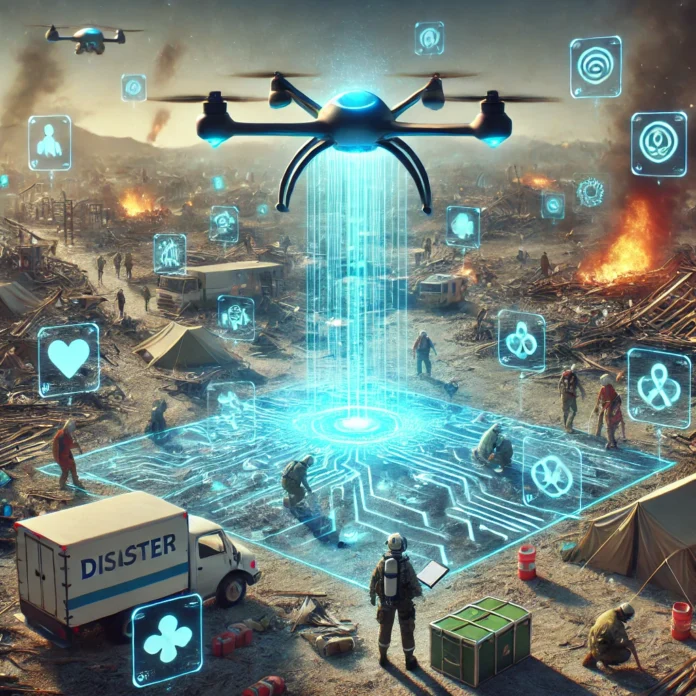Natural disasters, such as hurricanes, earthquakes, and floods, pose significant challenges to communities worldwide. Quick and effective disaster response is critical for saving lives and minimizing damage. Artificial Intelligence (AI) is transforming disaster relief efforts by enabling faster predictions, efficient resource allocation, and enhanced recovery operations. This integration of AI with humanitarian efforts is paving the way for a more resilient future.
Predicting Disasters Before They Strike
One of AI’s most critical roles in disaster relief is forecasting. By analyzing large datasets, AI models can predict natural disasters with greater accuracy and timeliness.
- Weather Forecasting: AI-powered tools like IBM’s Deep Thunder use machine learning to analyze atmospheric data and forecast extreme weather events, such as hurricanes and heavy rainfall, days in advance.
- Earthquake Detection: AI systems, such as those developed by Google’s AI for Earthquake Aftershocks, can predict the likelihood and location of aftershocks by analyzing seismic data, helping communities prepare for secondary impacts.
These predictive capabilities allow authorities to issue early warnings, potentially saving thousands of lives.
Optimizing Resource Allocation
Efficient resource allocation is vital during disaster relief to ensure help reaches the most affected areas. AI plays a crucial role in identifying hotspots of need and prioritizing aid distribution.
- Satellite Imagery Analysis: AI analyzes real-time satellite images to assess the extent of damage caused by disasters. Tools like UNOSAT and Planet AI help identify the most affected areas, allowing aid organizations to target their efforts effectively.
- Supply Chain Management: Platforms like One Concern use predictive analytics to optimize logistics, ensuring that food, water, and medical supplies are delivered where they are needed most.
Enhancing Emergency Response
During disasters, timely response is essential. AI-powered tools assist first responders by providing real-time information and insights.
- Search and Rescue Operations: AI-powered drones, like those from Skydio, are equipped with object recognition technology to locate survivors in debris or flooded areas. These drones can access hard-to-reach locations, significantly improving rescue efforts.
- Communication Systems: Chatbots like Microsoft’s AI4Humanity provide critical information to affected populations, such as evacuation routes, shelter locations, and emergency contacts, even in remote areas.
Post-Disaster Recovery
AI continues to be valuable long after the disaster has passed. Machine learning algorithms help rebuild communities by assessing structural damage and guiding reconstruction efforts.
- Damage Assessment: AI tools like Zesty.ai analyze images of damaged infrastructure to estimate repair costs and prioritize rebuilding efforts.
- Economic Impact Analysis: AI models predict the long-term economic impacts of disasters, helping governments and organizations develop effective recovery strategies.
Challenges and Ethical Considerations
Despite its promise, AI in disaster relief faces challenges, including data privacy concerns and technological accessibility. Deploying AI systems requires reliable infrastructure, which may not always be available in disaster-stricken areas. Moreover, reliance on AI must not replace the critical role of human expertise and compassion in relief efforts.
Conclusion
AI is revolutionizing disaster relief by predicting events, optimizing resource allocation, and enhancing emergency responses. By leveraging technology, communities can respond more effectively to natural disasters and recover faster. While challenges remain, the integration of AI into disaster relief efforts holds immense potential to save lives and build a more resilient future.





